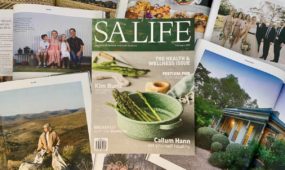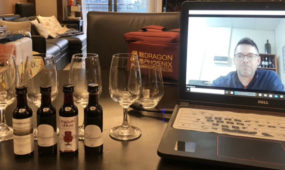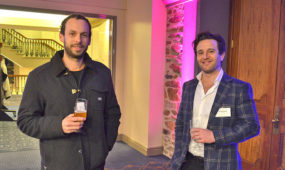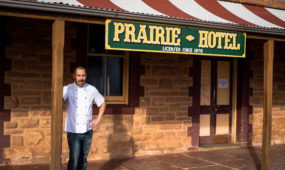Rural women at the forefront of resilient and sustainable farming
I Choose SA
Veterinarian and third generation beef pastoralist Ellen Litchfield is heading to desert country in Africa to research leading ways to farm cattle with little rainfall.

Sign up to receive notifications about new stories in this category.
Thank you for subscribing to story notifications.
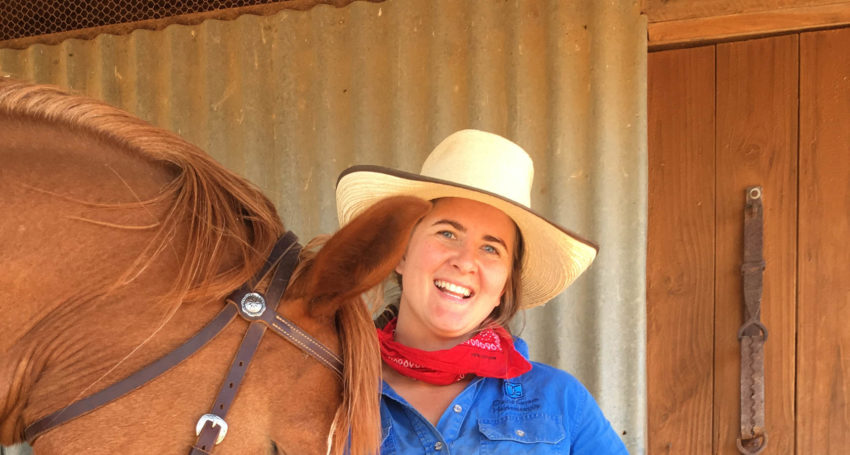
She’s also traveling to South America and the United States to explore the ways the world’s leading red meat producers tackle climate change as South Australia faces further climate challenges in coming decades.
“Our farming is completely reliant on rain, it really dictates our production values,” Dr Litchfield, who lives on Wilpoorinna Station south of Marree, says.
“I’m 100% sure climate change is happening but drought has always been one of the biggest problems facing our state, we need to be leaders in adapting, using new technologies and techniques.”
Dr Litchfield is among a growing number of SA women undergoing world-leading research in the agriculture industry to ensure local farmers are at the forefront in sustainably feeding the world.
Others include Dr Penny Roberts, site leader at the new $3.7 million Clare Research Centre with its focus on growing the best legume crops including lentils, chickpeas, faba beans and field peas.
And then there’s the women leading research at industry organisations, like Susie Green at the Apple and Pear Growers Association of SA and Caroline Rhodes at Grain Producers SA.
Dr Litchfield recently won a 2019 Nuffield scholarship supported by Westpac to research how red meat producers in arid and semi-arid regions around the world can better farm with less water and feed.
She is already well versed in farming in desert country, having grown up on Wilpoorina Station – returning 18 months ago after studying in Adelaide then Wagga Wagga to gain her veterinarian qualification.
She then travelled and worked around Australia and the world.
Dr Litchfield is now home with her fiancée Blake Ward to help her parents Gordon and Lyn Litchfield run the station.
It is part of the vast, family owned and run Litchfield Pastoral Company that takes in three stations with a combined 600,000ha.
“I just love the lifestyle working here, I like the feeling you are working toward something bigger, we are trying to maintain this natural ecosystem as well as to be able to feed people well into the future,” Dr Litchfield says.
“Food security is a big issue facing our society.”
Her uncle Peter and aunt Janine Litchfield are at Mundowndna and Ellen’s brother Adam and his wife Kate Litchfield are at Mt Lyndhurst.
There can be up to 5000 cattle and 10,000 Dorper sheep organically farmed across the properties, but Dr Litchfield says this fluctuates dramatically depending on rainfall.
“We had high rainfall in 2010 with about 400mm, a few years after that numbers of stock will be up but then when it gets drier numbers fall,” she says.
At the moment, the stations are holding up under the nation’s drought conditions but “we’ve had about 36mm this year, most of the rain we had last year in January” with Dr Litchfield keen to pursue best practice.
There’s still some dry feed but stock is being sold and “if there’s no rain before summer it will be a bit tough”. It helps that the family has chosen resilient stock.
Dorper sheep originated in South Africa and were bred for heat tolerance and, while cattle are mainly Angus, there are also dark, red Senepols “that have slick hair with good heat tolerance”.
“They are using them more in the Caribbean with dairy dropping off because of rising temperatures, crossing Freesians with Senepols,” Dr Litchfield says.
At Clare Research Centre, site leader Dr Penny Roberts who has a PhD in pasture cropping, says analysis is underway on different legume varieties along with trial growing sites around the state.
“We’re looking at what legume crops to grow where, and also how best to grow them, from pre-sowing and all the way through to harvest,” she says, adding that research was supported by Grains Research and Development Corporation funding.
The PIRSA centre also studies best species and varieties for pulse farmers to grow in specific regions with Dr Roberts saying there’s been a quantum change in the way these crops are grown in SA.
SA farmers traditionally planted pulses in rotations to provide nutrients and weed breaks for the cereal phase, with wheat and barley being the dominant crops.
“Now in some areas pulses are becoming the largest proportion of the cropping system,” Dr Roberts, who recently returned from a 13-day research tour in Canada, says.
“The aim of our research is to improve the production and profitability.”
This story was first published by Brand South Australia for the Regional Showcase.
Jump to next article
